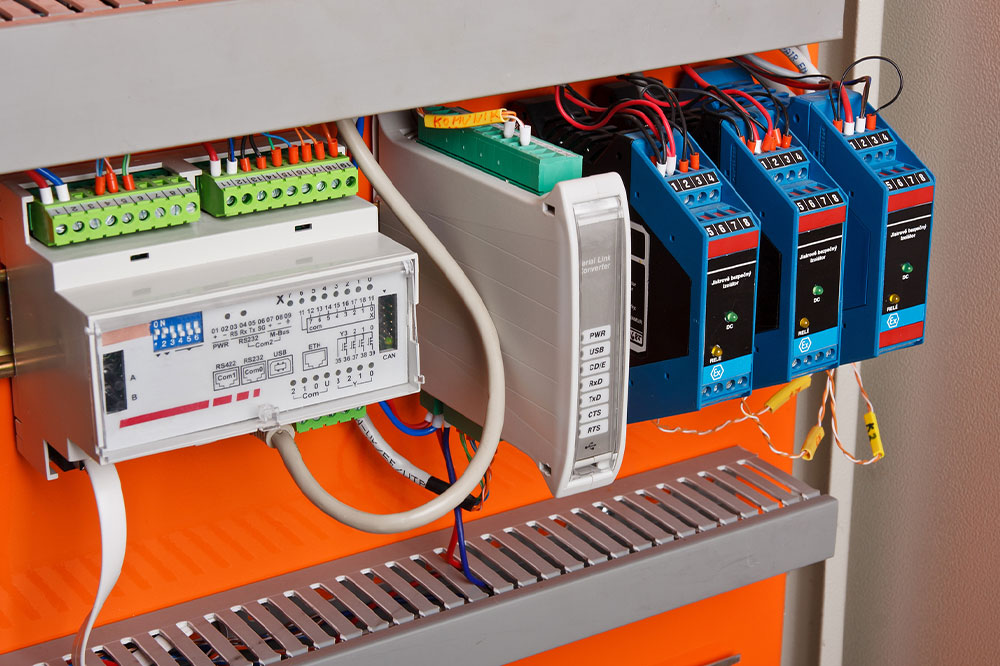
Types of Industrial Automation Control Components
Industrial automation is the straightforward process of integrating software and hardware components to control a machinery unit. It simply replaces the need for manual labor with innovative robotic solutions and programmable automation control components. Automation also increases efficiency and production output, minimizes manufacturing errors, and ensures seamless control over the systems and subsystems installed in a factory. Here is a brief overview of the types of automation and control components required to optimize industrial units.
Types of automation
Commonly, industrial units commission the following automation control devices to simplify production and manufacturing.
Fixed automation
Fixed automation repeats a particular task in the set pattern without any deviation to produce the same outcome each cycle. For example, packaging systems in a factory that mass-produces components require this type of automation to package and move the products down the conveyor line. The system helps cut labor costs and saves a lot of time.
Programmable automation
A dedicated computer program controls this type of automation so that the outcome will be determined based on the command programmed. One of the key benefits of programmable automation is that the commands can be reprogrammed to suit any task the machinery can carry out. So programmable systems are installed for manufacturing a specific product on a moving assembly line with the option to change the specifications as and when required.
Flexible automation
Flexible automation offers the best of both worlds with programmable commands for automation processes. You can code separately for each production or manufacturing task on the assembly line to produce various products. Flexible automation is employed in food packaging, labor-intensive custom manufacturing assembly lines, and batch processing to produce big volumes of the same product. Food and beverage industries require programmable automation to produce the components needed for processing raw materials into finished goods.
Integrated automation
With integrated automation, only computers handle everything from start to end on the assembly line installed across different manufacturing and assembly points in the business. Minimal supervision is necessary; only a few select technicians monitor the commands that control these processes. Larger factories and assembly lines require integrated automation to create components, test the viability of manufactured parts, and configure materials necessary for their fabrication. These processes, if done manually, will take a lot of time and effort. Therefore, automating all repetitive tasks to ensure a steady output flow and error-free production is the solution.
Automation control components
Different automation control components are designed and fabricated for factory installation based on the type of automation.
Power distribution components
Without power, machines cannot run. But not all machines require the same power input in terms of wattage. It is where power distribution systems control both the inflow and outflow of electricity to provide the specified wattage. These systems are configured with programmable codes to ensure the safety of equipment with safety disconnect switches that divert power flow to prevent mishaps in case of a malfunction.
Safety systems
All connected machines, drives, and moving parts must be assessed for operation safety. The factory or manufacturing plant must have failsafe safety systems and protocols in place during a malfunction. These plans and processes can minimize and eliminate hazards to ensure the safety of personnel and machinery.
Motor control, smart drives, and programmable I/Os
Once the assembly line is built, and the commands for controlling hardware and software devices are updated, several individual motor control and drive systems must be configured to run the entire line. These components control the speed and directional movement and oversee the entire functioning of the unit as a whole. These components also ensure there is no overload when the input and output parameters are changed.
Communication systems
The components of a machine automation system are ineffective without a proper communication system in place. Ethernet ports, high-speed internet connectivity, and even multiple levels of cybersecurity ensure there won’t be any interruption in the programmable commands. Automation systems consist of multiple subsystems, all connected and configured on a universal communication network.




